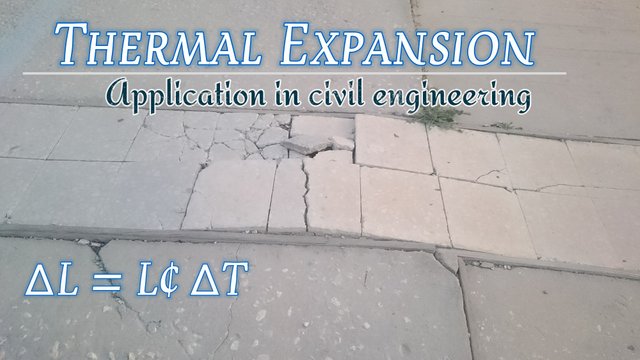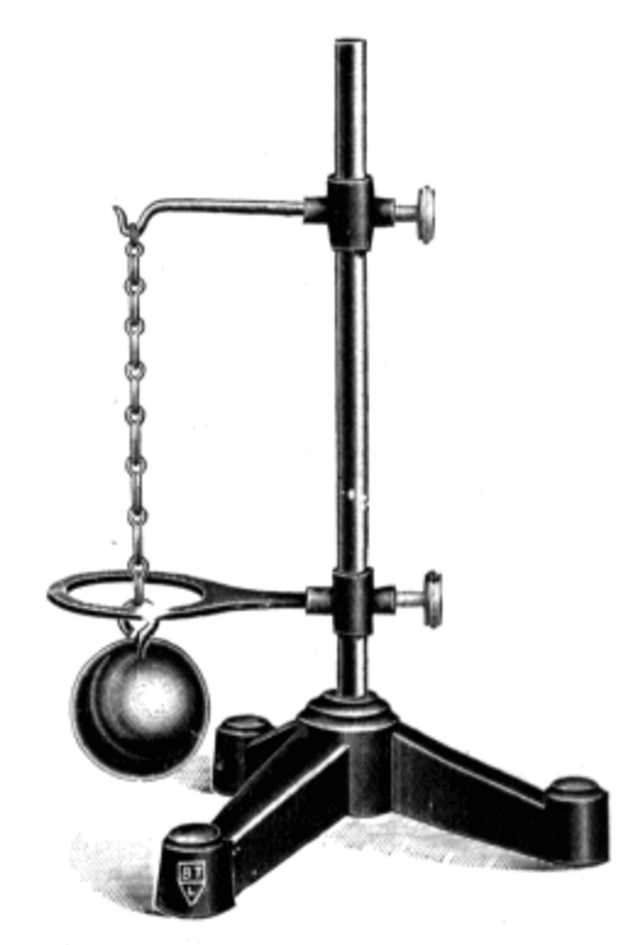Thermal Expansion: it's application in civil engineering.

source ... Sidewalk damaged due to constant contraction and expansion
∆L = L¢ ∆T
Thermal Expansion is the increase in the volume of a solid or a liquid material due to an increase in temperature. In most cases, the increase in size is directly proportional to temperature. A liquid may also expand if exposed to rising temperatures. That will be called cubic expansivity, but let's freeze the liquid topic for another day. Though it has so many useful applications. For an instance, if you have used a traditional thermometer, you would notice that the liquid inside the thermometer will expand depending on the temperature. And we are so sure of this phenomenon that we trust the thermometer reading.
Application of thermal expansivity.
Thermostat
A thermostat is a temperature dependent system that operates based on the phenomenon called thermal Expansion. It is basically made up of a material that adjusts it's length based on its surrounding temperature.
It's used in pressing iron to maintain constant temperature. And we also have it in refrigerator and ovens
Thermostat are used in air conditioners to regulate temperature.
Thermal Sensory Device
A similar principal is used to monitor the temperature level in vehicle engines and other parts of the car. This devices are designed to send a signal when stressed to a particular point.

source ... Gravesande's ring and ball is used to experimentally proof thermal Expansion, the ball will freely pass through the ring at room temperature but will not pass through the same ring after being heated up
Application in civil engineering
Failure to build structures with thermal Expansion in mind results in disaster. So civil engineers make use of the ∆L = L¢ ∆T
Which means that a change in a materials size, here represented as ∆L is a linear function of change in temperature here represented as ∆T proportion to it's length.
We can then calculate the expected change in the length of a material based on the materials coefficient. This allows us to create room for expansion at high and low temperature.( I used the ¢ to represent the materials coefficient)
Civil engineers come up with designs that have gaps along it's length and structures with ends that are not tightly fixed.
None compatible materials
Some materials can not be used together it their rate of expansion is to far from each other, one material will expand so fast compared to the other resulting in serious deformation. Experiments shows that reverting a piece of straight steel and cupper together when heated will curve because one will expand faster than the other resulting in the slower material being kept in the inner part of the curve.
It is ok to use rods and concrete in construction because the materials have almost the same expansion rate
Rail track construction
The tracks are design to overlap itself such that if it expands, the material will slide beside each other instead of pushing against each other resulting in a constant struntuctute during high and low temperature.
Hollow blocks
The hole in the middle of a block used for construction helps control expansion during a rise in temperature.
Other Application of thermal Expansion
- To help materials fit together very tightly. The two materials are made to have the same rim circumference, then the outer material is made to expand by applying heat. When it becomes slightly larger, it is made to fit on the other object. When its temperature drops, it becomes smaller ant fits tightly.
- Fire alarm triggers are sometimes made of materials thet increase in size due to the heat from the fire resulting in the alarm being triggered. This triggers often use a bimetallic strip which curves and trigger the alarm.
Conclusion
Thermal expansion besides damaging some poorly constructed structures, it had some very useful applications and can save lives and properties. Most topics we study in school has real life applications